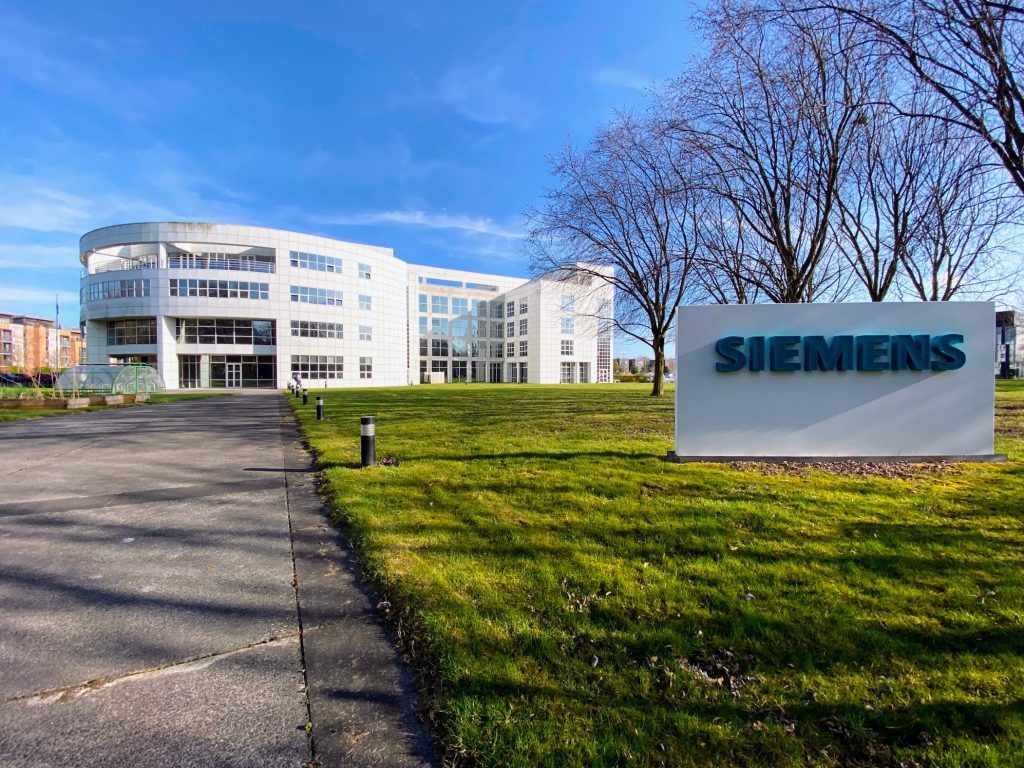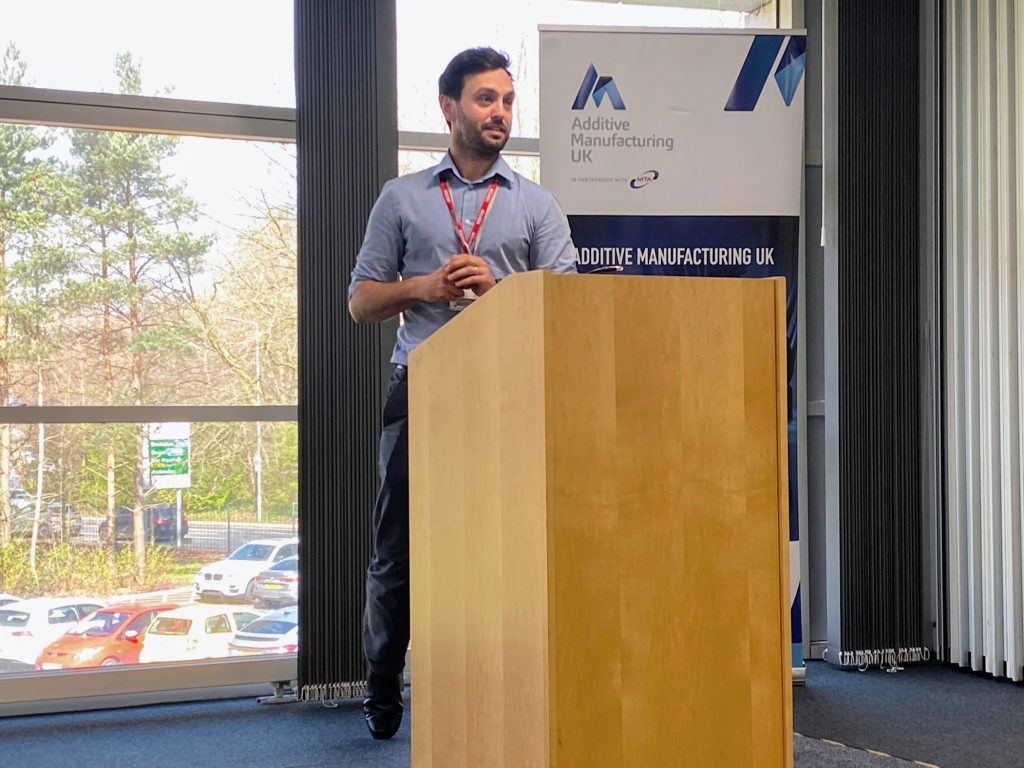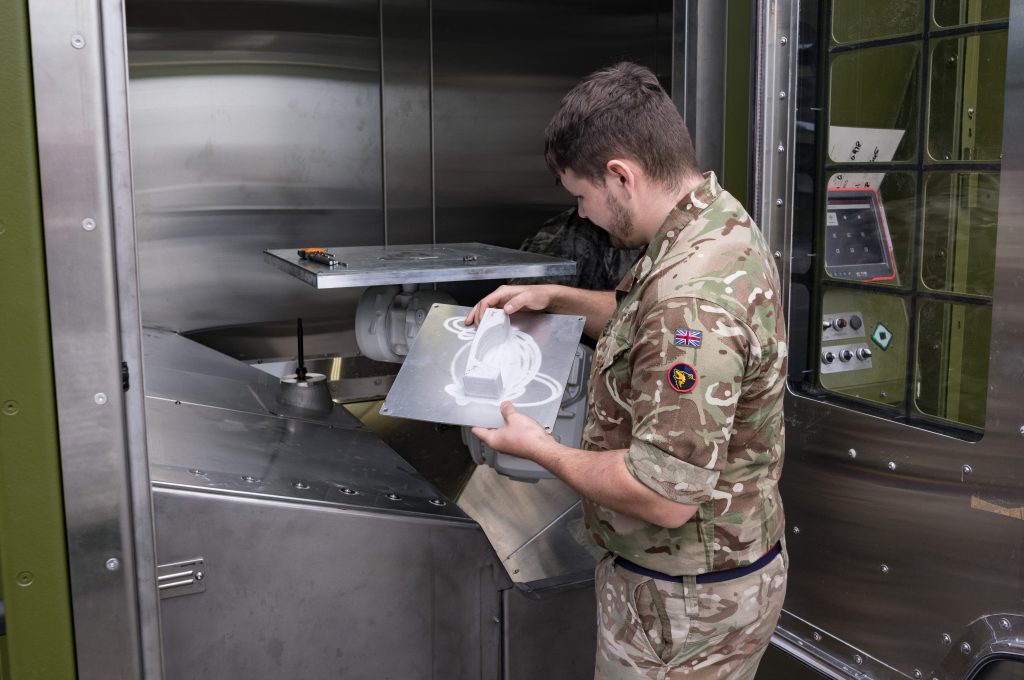Additive Manufacturing UK (AMUK)’s first Members Discussion board of 2025 was held at Siemens’ UK headquarters in South Manchester earlier this 12 months. The occasion featured shows from AMUK members and provided attendees an opportunity to community and share insights.
Forward of the day-long meetup, 3D Printing Business caught up with Joshua Dugdale, Head of AMUK, to be taught extra concerning the present state of additive manufacturing and the way forward for 3D printing in Britain.
AMUK is the UK’s main 3D printing commerce group. Established in 2014, it operates inside the Manufacturing Applied sciences Affiliation (MTA) cluster. Attendees at this 12 months’s first meetup spanned the UK’s complete 3D printing ecosystem. Highlights included dialogue on valuable supplies from Cookson Industrial, simulation software program from Siemens, digital thread options from Kaizen PLM, and 3D printing providers supplied by ARRK.
With a background in mechanical engineering, Dugdale is “liable for every part and something AMUK does as a company.” In line with the Loughborough College alumnus, who can also be Head of Know-how and Expertise on the MTA, AMUK’s core mission is to “create an setting within the UK the place additive manufacturing can thrive.” He elaborated on how his group is working to extend the business success of its members inside the “struggling” international manufacturing setting.
Dugdale shared his perspective on the important thing challenges going through 3D printing within the UK. He pointed to a “powerful” working setting hampered by international monetary challenges, which is delaying investments.
Regardless of this, AMUK’s chief stays optimistic concerning the sector’s long-term potential, highlighting the UK’s success in R&D and annual 3D printing mental property (IP) output. Dugdale emphasised the worth of 3D printing for UK protection and provide chain resilience, arguing that “protection will paved the way” in 3D printing innovation.
Trying forward, Dugdale known as on the UK Authorities to create a unified 3D printing roadmap to switch its “disjointed” method to coverage and funding. He additionally shared AMUK’s technique for 2025 and past, emphasizing a give attention to eductaion, provide chain visibility, and requirements. Finally, the AMUK figurehead shared a constructive outlook on the way forward for 3D printing within the UK. He envisions a brand new wave of innovation that may see extra British startups and college spinouts rising over the following 5 years.


What’s the present state of additive manufacturing within the UK?
In line with Dugdale, the 3D printing trade is experiencing a difficult interval, pushed largely by international financial pressures. “I wouldn’t describe it as underperforming, I’d describe it as flat,” Dugdale mentioned. “The manufacturing sector as an entire is going through vital challenges, and additive manufacturing isn’t any exception.” He pointed to elevated competitors, a cautious funding local weather, and the reluctance of companies to undertake new applied sciences because of the financial uncertainty.
Dugdale particularly highlighted the rise within the UK’s Nationwide Insurance coverage contribution (NIC) price for employers, which rose from 13.8% to fifteen% on April 6, 2025. He famous that many British corporations postponed funding choices forward of the announcement, reflecting rising warning inside the UK manufacturing sector. “With additive manufacturing, folks have to be prepared to take dangers,” added Dugdale. “Individuals are holding off for the time being as a result of the present local weather doesn’t favor danger.”
Dugdale stays optimistic concerning the sector’s long-term potential, arguing that the UK continues to excel in academia and R&D. Nevertheless, for Dugdale, commercializing that analysis is the place the nation should enhance earlier than it will possibly stand out on the world stage. This turns into particularly clear when in comparison with nations in North America and Asia, which obtain considerably higher monetary help. “We’re by no means going to compete with the US and China, as a result of they’ve a lot extra money behind them,” he defined.
In a European context, Dugdale believes the UK “is doing fairly nicely.” Nevertheless, Britain stays under Spain by way of monetary backing and know-how adoption. “Spain has a way more mature trade,” Dugdale defined. “Their AM affiliation has been going for 10 years, and it’s clear that their trade is extra cohesive and additional alongside. It’s a degree of professionalism we will be taught from.” Whereas the Iberian nation faces related challenges in requirements, provide chain, and visibility, it advantages from a degree of cohesion that units it other than many different European nations.
Dugdale pointed to the Formnext commerce present as a transparent instance of this disparity. He expects the Spanish pavilion to span round 200 sq. meters and have ten corporations at this 12 months’s occasion, a “large” distinction in comparison with the UK’s 36 sq. meters final 12 months. AMUK’s presence may develop to round 70 sq. meters at Formnext 2025, however this nonetheless lags far behind. Dugdale attributes this hole to authorities help. “They get extra funding. This makes it much more enticing for corporations to return as a result of there’s much less danger for them,” he defined.


3D printing for UK Protection
As international safety issues develop, the UK authorities has intensified efforts to bolster its protection capabilities. On this context, 3D printing is rising as a key enabler. Earlier this 12 months, the Ministry of Defence (MoD) launched its first Defence Superior Manufacturing Technique, outlining a plan to “embrace 3D printing,” with additive manufacturing anticipated to play a pivotal position in the UK’s future army operations.
Dugdale recognized two key benefits of additive manufacturing for protection: provide chain resilience and frontline manufacturing. For the previous, he pressured the significance of constructing localized provide chains to scale back lead occasions and remove dependence on abroad shipments. This functionality is essential for making certain that army platforms, whether or not on land, at sea, or within the air, stay operational.
3D printing close to the entrance traces presents benefits for conducting fast repairs and sustaining warfighting capabilities within the discipline. “If a tank must get again off the battlefield, you possibly can print a widget or bracket that’ll maintain for simply 5 miles,” Dugdale defined. “It’s not about good engineering; it’s about getting the car dwelling.”
The British Military has already adopted containerized 3D printers to check additive manufacturing close to the entrance traces. Final 12 months, British troops deployed steel and polymer 3D printers throughout Train Steadfast Defender, NATO’s largest army train because the Chilly Struggle. Dubbed Venture Bokkr, the additive manufacturing capabilities included XSPEE3D chilly spray 3D printer from Australian agency SPEE3D.
Elsewhere in 2024, the British Military participated in Additive Manufacturing Village 2024, a army showcase organized by the European Defence Company. Through the occasion, UK personnel 3D printed 133 purposeful components, together with 20 constituted of steel. Additionally they developed technical knowledge packs (TDPs) for 70 totally different 3D printable spare components. The intention was to equip Ukrainian troops with the aptitude to 3D print army tools immediately on the level of want.
Dugdale believes success within the UK protection sector will assist drive wider adoption of 3D printing. “Protection will paved the way,” he mentioned, suggesting that army customers will construct the information base obligatory for broader civilian adoption. This might additionally spur innovation in supplies science, an space Dugdale expects to see vital developments within the coming years.


Advocating for a “unified industrial technique”
Regardless of promising progress in defence, Dugdale recognized main hurdles that also hinder the widespread adoption of additive manufacturing (AM) within the UK.
A key problem lies within the vital information hole surrounding the varied forms of AM and their distinctive benefits. This hole, he famous, discourages professionals accustomed to conventional manufacturing strategies like milling and turning from embracing 3D printing. “FDM is just not the identical as WAAM,” added Dugdale. “Making an attempt to elucidate that in a really good, coherent story is just not at all times straightforward.”
Dugdale additionally raised issues concerning the trade’s fragmented nature, particularly with regards to software program compatibility and the dearth of interoperability between 3D printing methods. “The software program is commonly closed, and totally different machines don’t at all times talk nicely with one another. That may create concern about locking into the unsuitable ecosystem too early,” he defined.
For Dugdale, these obstacles can solely be overcome with a transparent industrial technique for additive manufacturing. He believes the UK Authorities ought to develop a unified technique that defines a transparent roadmap for improvement. This, Dugdale argued, would allow trade gamers to align their efforts and investments.
The UK has invested over £500 million in AM-related initiatives over the previous decade. Nevertheless, Dugdale defined that fragmented funding has restricted its influence. As a substitute, the AMUK Chief argues that the UK Authorities’s technique ought to acknowledge AM as one in all “a number of key enabling applied sciences,” alongside machine tooling, metrology, and different essential manufacturing instruments.
He believes this unified method may considerably enhance the UK’s productiveness and absolutely combine 3D printing into the broader industrial panorama. “Firms will align themselves with the roadmap, permitting them to develop and mature on the identical price,” Dugdale added. “It will assist us to make smarter choices about how we fund and the place we fund.”
AMUK’s roadmap and the way forward for 3D printing within the UK
When forecasting 3D printing market efficiency, Dugdale and his group observe 5 key industries: automotive, aerospace, medical, steel items, and chemical processes. In line with Dugdale, these industries are the first customers of machine instruments, which makes them essential indicators of market well being.
AMUK additionally depends on 3D printing trade surveys to gauge confidence, serving to them to identify tendencies even when granular knowledge is scarce. By evaluating sector efficiency with survey-based confidence indicators, AMUK builds insights into the longer term market trajectory. The robust efficiency of sectors like aerospace and healthcare, which rely closely on 3D printing, reinforces Dugdale’s confidence within the long-term potential of additive manufacturing.
Looking forward to the second half of 2025, AMUK plans to give attention to three main challenges: provide chain visibility, abilities improvement, and requirements. Dugdale explains that these points stay central to the maturation of the UK’s AM ecosystem. Training will play a key position in these efforts.
AMUK is already operating a number of additive manufacturing upskilling initiatives in colleges and universities to construct the following technology of 3D printing pioneers. These embody pilot initiatives that introduce 3D printing to Key Stage 3 college students (aged 11) and AM college programs which can be tailor-made to trade wants.
In the long run, Dugdale suggests AMUK may evolve to focus extra on addressing particular trade challenges, similar to net-zero emissions or automotive light-weighting. This is able to contain creating specialised working teams that concentrate on how 3D printing can handle particular urgent points.
Curiously, Dugdale revealed that AMUK’s success in advancing the UK’s 3D printing trade may finally result in the group being dissolved and reabsorbed into the MTA. This end result, he defined, would sign that “additive manufacturing has actually matured” and is now seen as an integral a part of the broader manufacturing ecosystem, reasonably than a distinct segment know-how.
Finally, Dugdale is optimistic for the way forward for 3D printing within the UK. He acknowledged that AMUK remains to be “making an attempt to play catch-up for the final 100 years of machine instrument know-how.” Nevertheless, additive manufacturing improvements are set to speed up. “There’s a whole lot of thrilling analysis occurring in universities, and we have to discover methods to assist these initiatives achieve the funding and visibility they want,” Dugdale urged.
Because the know-how continues to develop, Dugdale believes additive manufacturing will steadily lose its area of interest standing and change into an ordinary instrument for producers. “In ten years, we may see a technology of employees who grew up with 3D printers at dwelling,” he advised me. “For them, it should simply be one other know-how to make use of within the office, not one thing to be amazed by.”
With this future in thoughts, Dugdale’s imaginative and prescient for 3D printing is one in all broad adoption, supported by clear technique and coverage, because the know-how continues to evolve and combine into UK trade.
Take the 3DPI Reader Survey — form the way forward for AM reporting in underneath 5 minutes.
Who gained the 2024 3D Printing Business Awards?
Subscribe to the 3D Printing Business e-newsletter to maintain up with the most recent 3D printing information.
You may as well observe us on LinkedIn, and subscribe to the 3D Printing Business Youtube channel to entry extra unique content material.

